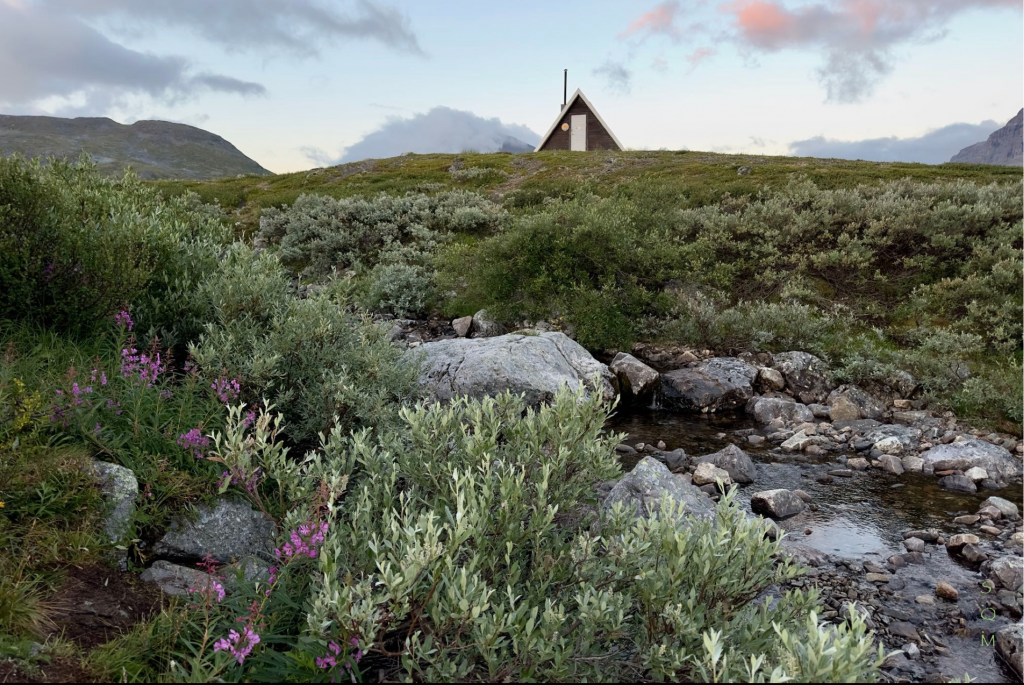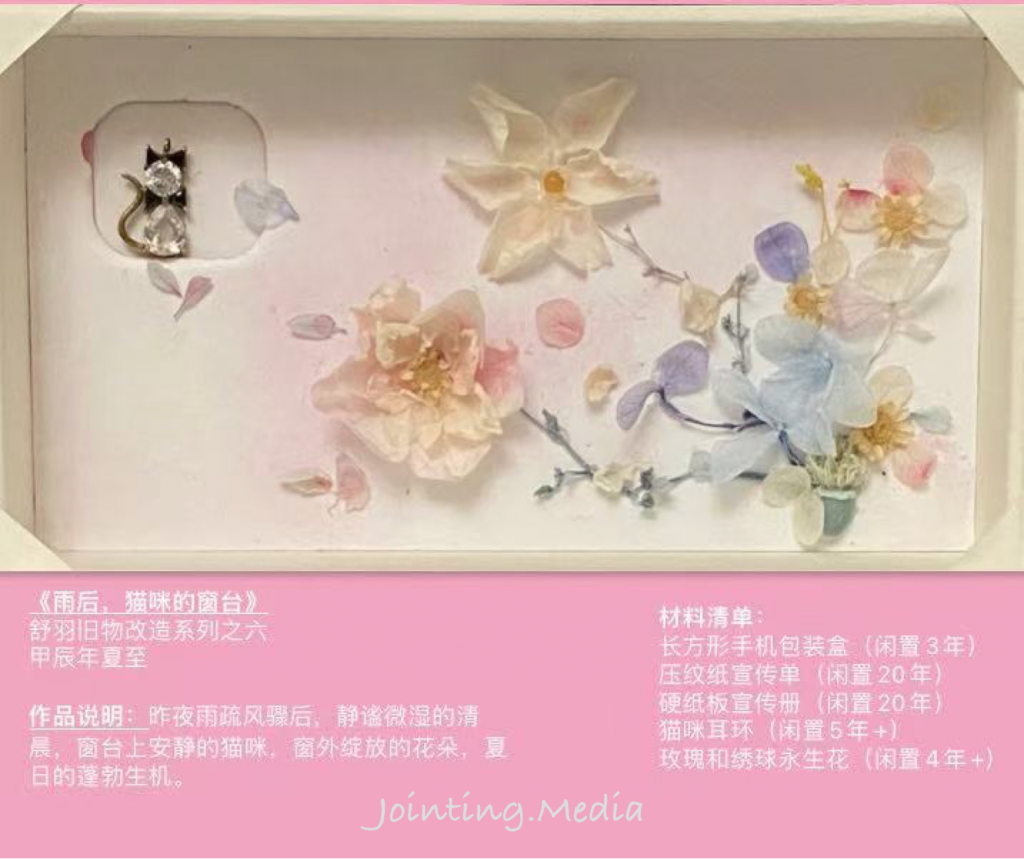‘Sustainability’ Is the Most Misleading of the New Business Buzzwords
【企业社会责任与可持续发展】| CSR & Sustainability
By R. David McLean,Cato Institute,May 14, 2024
Earlier this year Hertz announced it was selling 20,000 of the electric vehicles in its fleet and would buy gas-powered vehicles instead.
The reason? Electric vehicles are too expensive to maintain, and more customers prefer gas-powered cars.

Hertz is taking a $245 million loss on the sale. The company’s CEO, who increased electric vehicles’ share of its fleet, resigned.
After all that, is Hertz a more, or less, sustainable company?
One study estimates that a single electric vehicle receives over $48,000 in subsidies over a 10-year lifetime. The tax credits and rebates that most people are familiar with add up to nearly $9,000. Is it fair to describe a product as sustainable if it needs to be subsidized this much?
Oil companies are supposedly unsustainable. Yet 11 of the world’s top 25 most profitable companies, such as Exxon, Shell, and Chevron, are fossil fuel companies. None of them need subsidies to survive.
In contrast, Siemens Energy, one of the world’s largest wind turbine manufacturers, lost $4.5 billion in 2023. The German government recently gave it a rescue package worth $16 billion in U.S. dollars. Which is a more sustainable business, Siemens or the fossil fuel companies?
Calling something sustainable does not make it so. Firms that cannot make consistent profits will either have to be subsidized or die. It does not matter if they make solar panels or pump oil.
Investing in companies that make windmills, solar panels, and electric vehicles in the absence of profits is a bet that governments will continue subsidizing them. Calling that “sustainable investing” misrepresents reality.
Continuing to subsidize such businesses will be very expensive. The $16 billion Siemens got from the German government is small potatoes.
The European Round Table for Industry recently stated that it will cost Europeans $853 billion USD by 2030 and $2.66 trillion by 2050 to meet the goal of net zero C02 emissions by 2050. That money could instead be invested in schools, hospitals, roads, new technologies, cures for diseases, and many other things that can benefit humanity today and in the foreseeable future. Yet, the sustainability moniker doesn’t delve into those issues.
That’s because the sustainability moniker’s use in the business world has nothing to do with the actual meaning of the word. Rather, it originated among progressives working at the United Nations, the World Economic Forum, and in the finance industry to promote progressive agendas that most people do not favor.
The Oxford Languages dictionary defines sustainable as “able to be maintained at a certain rate or level.” Some fund managers such as BlackRock define sustainable investing as investing in so-called ESG funds—those promoting “environmental, social, and governance” goals.
But ESG is not in the definition of sustainable. Rather, it is a subjective rating scheme promoting environmental and social causes that progressives favor. We can debate the merits of those causes, but an honest debate requires not placing misleading labels on them.
David McLean is the William G. Droms Professor of Finance and Finance Area Chair at Georgetown University’s McDonough School of Business. His research interests are in stock return predictability, behavioral finance, and the interplay between financial markets and corporate investment. David’s papers have been published in leading finance journals, such as the Journal of Finance, Journal of Financial Economics, and Review of Financial Studies. His research has won several awards, including the Amundi Smith Breeden Award for the best paper in the Journal of Finance and the Jensen Prize for the best paper in the Journal of Financial Economics. Major media outlets, including the Wall Street Journal, Financial Times, New York Times, and the Economist have covered his research. David serves on the editorial boards of several academic journals, including Management Science and the Journal of Financial and Quantitative Analysis. He is the author of the book The Case for Shareholder Capitalism: How the Pursuit of Profit Benefits All.
Reprinted from Cato Institute
ESG Does Not Measure a Firm’s Social Impact
This chart shows why heat pumps are still hot in the US
【能源与环境】 | Energy & Environment
By Casey Crownhart, MIT Technology Review,2024-02-12
Sales slowed in 2023, but heat pumps are gaining ground on fossil fuels.

STEPHANIE ARNETT/MITTR | ENVATO
Heat pumps are still a hot technology, though sales in the US, one of the world’s largest markets, fell in 2023. Even with the drop, the appliances beat out gas furnaces for the second year in a row and saw their overall market share increase compared to furnaces, sales of which also fell last year.
Heat pumps heat and cool spaces using electricity, and they could be a major tool in the effort to cut greenhouse gas emissions. (About 10% of global emissions are generated from heating buildings.) Many homes and other buildings around the world use fossil fuels for heating in systems like gas furnaces—heat pumps are generally more efficient, and crucially, can be powered using renewable electricity. Experts say heat pump sales will need to grow quickly in order to keep buildings safe and comfortable while meeting climate goals.
Heat pumps have been around for decades, but the technology has been experiencing a clear moment in the sun in recent years, with global sales increasing by double digits in both 2021 and 2022, according to the International Energy Agency (IEA). Heat pumps were featured on MIT Technology Review’s 2024 list of 10 Breakthrough Technologies.
Sales fell by nearly 17% in 2023 in the US, one of the technology’s largest markets, according to new data from the Air-Conditioning, Heating, and Refrigeration Institute. The slowdown comes after nearly a decade of constant growth. The AHRI data isn’t comprehensive, but the organization includes manufacturers accounting for about 90% of the units sold in the US annually.
Annual US heat pump and gas furnace sales

However, the decline likely says less about heat pumps than it does about the whole HVAC sector, since gas furnaces and air conditioners saw even steeper drops. Gas furnace sales declined even more than heat pumps did in 2023, so heat pumps actually made up a slightly larger percentage of sales this year than in 2022.
The broad slowdown reflects broader consumer pessimism amid higher interest rates and inflation, says Yannick Monschauer, an analyst at the IEA, via email.
“We have also been observing slowing heat pump sales in other parts of the world for 2023,” Monschauer adds. In Europe, a rush to electrify, driven by the energy crisis and rising natural gas prices, has slowed.
New incentives programs could help speed progress in 2024 and beyond. The Inflation Reduction Act, a sweeping climate bill passed in 2022, includes individual tax credits for up to $2,000 towards a new heat pump, which went into effect at the beginning of 2023.
However, the more generous incentives in that law have yet to take effect, says Wael Kanj, a research associate at Rewiring America, a nonprofit group focused on electrification in the US.
New rebates set aside funding of up to $8,000 towards a new heat pump system for low- and middle-income households. Distributing the rebates is up to individual states, and analysts anticipate those programs getting up and running in late 2024, or early 2025, Kanj says.
Heat pumps are a crucial component of plans to combat climate change. In a scenario where the world reaches net-zero emissions by 2050, heat pumps need to account for 20% of global heating capacity by the end of this decade, according to an IEA analysis.
“The next five, ten, 15 years are really going to be important,” Kanj says. “We definitely need to pick up the pace.”
Reprinted from MIT Technology Review .
Ralated:
the Future of Heat Pumps
Everything you need to know about the wild world of heat pumps
Heat pumps: 10 Breakthrough Technologies 2024
JM Review | No Innovation Environment Here
【观点】| Insight
By Jointing.Media, in Shanghai, 2023-12-30

According to the National Bureau of Statistics, the unemployment rate for young people (aged 16-24) was 21.3% in June this year, the highest since the start of the graduation season in January 2018.
According to statistics recently released by the Ministry of Education, the number of applicants for the 2024 postgraduate entrance exams fell sharply for the first time in a decade, to 4.38 million.
As of 24 October, more than 2.91 million people had registered for the 2024 national exam, a new record high, according to statistics provided by Zhonggong Education. The average competition ratio is 66:1. Judging by the registration situation for the National Examination in the past three years, the fever has not abated: the number of applicants for the National Examination in 2021 is more than 1.5 million, the number of applicants for the National Examination in 2022 is more than 2.02 million, and the number of applicants for the National Examination in 2023 is more than 2.5 million.
11 December 2023 will be the 112th anniversary of Qian Xuesen’s birth. Thirteen years ago, Qian Lao said that after returning to China after so many years, he felt that there was no such school (like Caltech) in China, and there was no university in China that could run a school according to the mode of training scientific and technological invention and creation talents. The words are still ringing in my ears. The environment is an important educational resource. The university environment is influenced by the social environment, whether our social environment is free and relaxed, suitable for innovation, whether there are channels to express different opinions, and whether those who dare to challenge authority are not suppressed…
The German philosopher Jaspers believed that the process of education is first a process of spiritual growth and then it becomes part of the process of scientific knowledge. The school should create an intellectual and spiritual foundation for a person. The purpose of the school is to translate the spiritual content of mankind in history into the dynamic spirit of today, and through this spirit to lead all students to acquire knowledge and technology. Today, in universities and colleges, the endless recruitment of students, the multiplication of so-called necessary lectures and exercises, the stuffing of students’ minds with such things as “instruments” under forms, while the repeated loss of the “way” of true existence, undoubtedly blocks the passage of the student to the spirit of freedom. The unsystematic specialisation and knowledge, the teaching of examination skills, etc., all weaken the original spiritual life, weaken the student’s ability to reflect, as well as the independent personality and the habit of repeatedly thinking about a problem.
China’s higher education reform started in 1978. In the comprehensive reform period from 2010 to now, the theme is comprehensive quality improvement, and the main measures include promoting innovation and entrepreneurship education, transforming and developing local undergraduate colleges and universities, and implementing “double first-class” construction. More than ten years later, what is the state of our university’s environment? Is it developing in the direction expected by Qian Lao?
Edited by Wind, Youdao and DeepL
Ralated:
JM Review | Yu Leiming: Rescuer of Over 2,000 Stray Animals, Remembered
By Jointing.Media, in Shanghai, 2023-10-06

Through social media posts, we learned of the passing of this remarkable man: Yu Leiming, who left us for heaven on August 5, 2023, at the age of 46. It is a regret that JMers, members of our community, failed to share his story and the tales of his ‘fur kids’ during his lifetime. JM now compile accounts from various sources, hoping to piece together fragments of an ordinary yet beautiful soul—because he deserves to be remembered by this world
The story of Yu Lei ming and stray animals reminds me of the classic Japanese film The Story of Hachikō(ハチ公物語 (1987)), adapted in the U.S. and China. Just as “There are a thousand Hamlets in a thousand eyes,” perspectives on Yu’s devotion to rescuing stray animals vary drastically. To some, his selflessness seemed ‘unworthy’—sacrificing his own well-being for animals, neglecting his parents, ending a nine-year relationship, or ‘wasting’ resources on animals instead of humans. Reading such comments, JM cannot help but ask:
What truly defines the bond between humans and pets—ownership, kinship, or something else?
How do we morally distinguish abandoning infants, the elderly, and pets?
Why do so many abandon pets? What systemic failures enable this, and how can we address them?
Why do rescuers like Yu, who dedicate their lives and livelihoods to saving animals, struggle to survive with dignity? What barriers prevent ‘Yu Leimings’ from securing sustainable support?
In the face of societal challenges, most observe outcomes, some question causes, fewer seek solutions, and a rare few take action—even in small ways. Undeniably, Yu Leiming belongs to that admirable, vanishingly small group of problem-solvers.
Edited by Wind and DeepSeek
Ralated:
Remembering Disappeared Journalists on Journalists’ Day
There is no Education for a Country, Only for a Person
Can we use plastic waste to build roads, buildings, and more?
Stanford engineers Michael Lepech and Zhiye Li have a unique vision of the future: buildings and roads made from plastic waste.
As part of a federal white paper evaluating the possibility of using plastic waste in infrastructure, Stanford researchers analyzed a California road project that used plastic bottles in asphalt. (Image credit: Caltrans)

In a new white paper commissioned by the National Academies of Sciences, Engineering, and Medicine (NASEM), Lepech and Li study the current status, challenges, and needs of recycling plastics in a circular economy, and examine the long-term durability and environmental costs of doing so for use in infrastructure. Using a mix of computer modeling, scientific research, experimental and field data, as well as interviews with recycling industry stakeholders, Lepech and Li analyze case studies using plastic waste for façade panels in the San Francisco Museum of Modern Art and pavement in a California Department of Transportation road project. Among other results, their findings indicate that recycled glass fiber reinforced polymer composite – a tensile plastic commonly used in car, boat, and plane parts – is a promising material for reuse in buildings.
NASEM published the white paper as an appendix to its recent report to Congress, the U.S. Department of Transportation, and the U.S. Environmental Protection Agency, and may use it as the basis of recommendations to policymakers.
Below, Lepech, a professor of civil and environmental engineering, and Li, a postdoctoral scholar in civil and environmental engineering, discuss obstacles, opportunities, and other aspects of transforming or upcycling plastic waste into valuable materials.
What are some of the biggest obstacles for repurposing plastic waste into infrastructure applications?
Lepech: One of the challenges that we and others identified through this work is the difficult economics and logistics of managing plastic waste streams from municipal solid waste. Plastic waste material flow is highly variable. Its mass can change from month to month, as can the type of plastic – lots of different packaging, for example.
What about the big opportunities?
Lepech: The recycling of entire buildings made of polymer composites at the end of their useful lives could be a game changer. That’s because the amount of material, along with its likely uniform composition, would make recycling it into another infrastructure application significantly easier.
Li: Our paper gives a few recommendations: Improve waste sorting, encourage and support plastic upcycling innovation, set up a performance database of certain plastic blends, and establish predictable models for these materials’ durability under different use conditions.
What lessons does upcycling of plastic waste for infrastructure hold for other circular economy efforts?
Li: Upcycling of recycled plastics in infrastructure sets an example of creating value by creating demand. The recycled plastic blended construction material needs to achieve certain performance requirements and maintain lower environmental impacts than conventional construction materials. Our paper shows that for a use case that has a longer lifespan – such as certain blended plastic composite building panels or asphalt pavement, the needed quality and sustainability requirements are more achievable.
Upcycling plastic waste has obvious environmental advantages. What are the business/profit advantages?
Lepech: Among the many potential advantages, firms that are part of a circular economy value chain may see regulatory advantages, such as extended protection of an explicit or implicit license to operate or greater flexibility with regulatory agencies. There are obvious operational efficiencies possible when not relying upon virgin fossil resources. From the standpoint of risk management, there could be reduced potential for environmental emergencies, such as oil spills, and reduced insurance premiums. There is certainly opportunity for growth by targeting markets that value environmentally friendly or sustainable products. Finally, firms can achieve increased clarity in strategic direction when they align value chains with corporate mission, especially in the case of environmentally conscious firms.
Beyond buildings and roadways, what are some major potential applications for upcycling plastic waste?
Li: Upcycling plastic waste in infrastructure has attracted increasing interest because it creates something of high value for which there is large potential demand. Beyond buildings, there are many applications for reusing plastic, but not many that would use as much plastic waste or last as long. For example, packaging consumes more than 60% of global recycled plastic, but has a short lifespan. Some automotive parts can be made with recycled plastic, but they require relatively little plastic to produce.
Lepech is also faculty director of the Stanford Center at the Incheon Global Campus, a research center in Korea focused on smart, sustainable cities and urban communities, and a senior fellow at the Stanford Woods Institute for the Environment. Li is also a researcher at Stanford’s John A. Blume Earthquake Engineering Center and the Stanford Center at the Incheon Global Campus.
Why North China has experienced frequent rainstorms in recent years
【能源与环境】 | Energy & Environment
Edited by Valley Jointing.Media, in Wuhan,2023-08-12

Rainstroms are usually caused by mesoscale weather systems. Normally three conditions are required for a rainstorm to form: a sufficient water vapor supply, strong vertical rising conditions, and a certain duration of precipitation. The rainy season in North China occurs from July to August every year. This year, the combination of twin typhoons with the abundant water vapor supply chain outside the Subtropical High, coupled with the stagnation of the subtropical high and the terrain, has led to heavy rains in North China. Eventually it led to mountain mudslides, landslides and other flood disasters and urban waterlogging.
In this round of rainstorms, the generation and development of double typhoons will be potentially affected by El Nino, but the impact mechanism will need to await the specific analysis of scientists after this rainstorm. Under the background of climate change, the frequency of El Nino has been greatly increased in the past 30 years compared with the past few centuries. And its climate impact will be significantly enhanced, which may cause greater climate disasters in the future.
To explain the reason for the frequency of extreme catastrophic weather, such as extreme rainstorms, should be viewed from two perspectives: climate change and human activities affecting the atmospheric environment. On the one hand, global warming not only changes the temperature state and distribution pattern of the earth’s land atmosphere, but also affects the thermal state of the ocean, which leads to the intensification of climate change, breaks the stability of the original weather and climate patterns, and leads to the frequent and frequent occurrence of abnormal weather such as extreme rainstorms. On the other hand, the aerosol caused by human activities and air pollution emissions plays a certain role in the change of precipitation pattern.
The formation mechanism of rainstorm has not been thoroughly studied so far due to the rainstorm has local features and characters, paroxysm, and changeable activity etc. Therefore, it is still a difficult problem in the field of meteorology all over the world. It is even more difficult to forecast extreme rainfall of more than 200 mm in an hour.
Around the world, the accuracy of rainstorm prediction is not high enough, with the highest accuracy in the United States at only 25%. China mainly uses numerical weather forecast model products combined with the knowledge and experience of forecasters. Compared with the European centre and the United States, China’s numerical forecasting started late, and the congenital conditions are in a weak position.
JM Review | Renewable plastics still not recycled enough
By Jointing.Media, in Shanghai, 2023-07-25
In October 2021, the United Nations Environment Programme (UNEP) released its latest assessment report, From Pollution to Solutions: A Global Assessment of Marine Litter and Plastic Pollution. According to the report, there are still approximately 75 to 199 million tons of plastic waste in the ocean, accounting for 85% of the total weight of marine debris. Without effective action, the amount of plastic waste entering aquatic ecosystems each year is expected to nearly triple to 23-37 million tons per year by 2040.
The report shows about 9.2 billion tons of plastic products were produced worldwide between 1950 and 2017, of which about 7 billion tons ended up as plastic waste. The recycling rate of this plastic waste is very low, less than 10%. Millions of tons of plastic waste are discarded into the natural environment or transported thousands of miles to be incinerated or dumped.
According to a study published in Nature Communications, a subsidiary of the journal Nature, 1.15-2.41 million tons of plastic waste are discharged into the world’s oceans through rivers each year, with Asia accounting for 67% of the global total pollution.
Plastic recycling has been the focus of renewable resources research in recent years. Early plastic demand in China is large, and the overall plastic production capacity is insufficient, resulting in waste plastic imports continue to increase, between 2008 and 2012, China’s waste plastic imports have increased by nearly 9 million tons. Up to 45% of the world’s waste plastic exports go to China.
In 2013, China launched the “Green Fence” campaign to ban the import of unclean waste plastic and other “toxic” waste. After the “waste ban” was introduced, the import of plastic waste was completely banned. At the same time, due to the current domestic recycled plastic technology and industrial chain is still immature, compared with the international developed level of the average cost of about 10-20% higher. Recycled plastic imports remain high. Data shows that in 2021, imports of recycled plastic particles were about 3.6 million tons.
China has never sent plastic waste to other countries, and the local treatment rate has reached 100%. According to the estimates of China Materials Recycling Association, in 2021, China’s waste plastic recycling amount will reach 19 million tons, the recovery rate will reach 31%, and the recycling capacity will account for about 70% of the world.
Developed countries and large companies around the world began to pay attention to the use of renewable plastics. In Europe, the recycling rate of plastic packaging waste is required to reach 50% by 2025 and 55% by 2030. According to a report published by the French environmental protection group Veolia, the recycling of recycled plastics can reduce carbon emissions by 30-80% compared to the production of raw plastics.
Edited by Wind and DeepL
Ralated:
Can We Use Plastic Waste to Build Roads, Buildings, and More?
Great Love of the Great Doctor: Zhang Xingru’s Philosophy of Philanthropy (V)
【专栏】| Conlumists >微公益 | MicroCharity
By Yibai, Jointing.Media, in Shanghai, 2011-01-25
To maximize utility, it is enough to do public welfare in your spare time
Everyone do their own work and use their skill to do something in spare time. It is the embodiment of their own value. Fame and profit should not be considered together, or it will easily cause problems. People have to consciously reduce these temptations and mistakes.
——Zhang Xingru
People in Beijing, Shanghai and Guangzhou usually have a lot of pressure from work and life, so many people use their annual leave to travel around the world and enjoy life. But the members of GMX are “put their finger in the fire”. Ming Qing, a BiMBA student, wrote an article in the alumni magazine, recalling her experience of the GMX in Gannan, Gansu Province in 2009:
Doctors and nurses are the main force of our team, they not only have to overcome altitude sickness and difficult environment, but also have to carry out high-intensity surgery under harsh working environment… On August 2 and 3, every day from 8:00 a.m. to 12:00 p.m., lunch and dinner were sent to the operating room and doctors and nurses can only grab a few bites of food between operations.
At 8:00 p.m. on August 3, after the 46th operation of the day, The doctors’ health soon wore out. Wang Meifen has gone out to vomit twice;Director Zhang Weiying did not finish an operation, she ran out to breathe oxygen for three minutes;Li Qingsong ate 5 pieces of painkiller a day. But there are seven other patients out there who have been waiting all day. How shall we do? Dean Zhang Xingru and Director Xu Fang looked at each other, and then decide: Let’s go on. The operation lasted until 12:00 at night…
Yu Junjie, the equipment support engineer of GMX, stood during the three days of surgery, day and night, and no one replaced him. At the end of the first day, his right hand was red and swollen, and Wang Meifen analyzed that it was burned when he was pasteurized because the time is tight.
She also wrote:
I love GMX- this three characters. Every year, I personally came to the scene and deeply understand that:there are always some things in life let us see the future hope; There must be some evil people to make us believe that human nature is still good; There must always be some places that let us know that the world is still beautiful as always.
Ming Qing followed GMX for three consecutive years.
Everyone can contribute to public welfare projects in their spare time
“Go once a year for one week at a time” – this is the cycle and duration of the Illuminati action.
Zhang said, “We all use our vacation to participate in GMX. The reason why we will choose this time to go is also because this time everyone’s work is a little idle, the children are on summer vacation, and the responsibilities at home are less. And it’s relatively safe in the summer.”
Some entrepreneurs become successful in business and devote themselves full-time to philanthropy. Zhang Xingru’s view of such behavior is: “This practice is great from the spiritual level, but does it play the maximum value of the individual? If he had stayed in business, he might have been of greater value to society.”
His view is that it is more valuable to do what you do best and contribute to the public good.
Everyone do their own work and use their skill to do something in spare time. It is the embodiment of their own value. Zhang Xingru believes that enterprises growth too quickly after the reform and opening up without deposition process. The accumulation of corporate wealth needs to give back to society. Although there are differences in individual ability, there is no difference between high and low rank . Everyone can do charity and public welfare, the key is to find their own points to realize personal value.
“Don’t need to do it with a bang. Do it quietly. Do what you are best at and contribute a skill to society. Stick to your position, and do the easy thing in your spare time, which may be more suitable for most people,” Zhang Xingru said.
GMX is only once a year but the preparation period is relatively long. From planning to implementation, from medical treatment to logistics, communication and coordination are the most important tasks. The selection of team member is a laborious task. Zhang Xingru said: “We will set up a contact person every year, two to three hundred phone calls during this process. It takes a lot of phone calls to go or not, back and forth, It takes a lot of time.”
Stay away from fame and fortune, reduce mistakes
GMX does not cost the local government any money, and the players are not paid for their work. GMX is rarely reported in the media. JM will not know which companies have donated and participated in if JM do not read their internal publications. Zhang Xingru said that the entrepreneurs who participate in are very good, their companies do not need publicity, and GMX basically does not do publicity. Only members who participate in wrote articles on their own blogs, expressing their personal feelings, for internal communication and to recall in old age.
An enterprise evaluation of GMX: “You do this kind of thing is very real, there is no thought of fame and wealth.”
“Fame and profit cannot be combined, and it is easy to have problems when combined.” Reduce these temptations and mistakes. If something goes wrong once, it will be difficult for others to follow you. “From the bottom of my heart, we want to do something for the marginal poor areas. It is not for good karma but to use own skills, find like-minded people to do something together “,
Many GMX’s members have participated in more than once and donated many years. Dr. Xia Youliang followed GMX for three consecutive years. Zhang Ping, a corporate volunteer in Jinan, Shandong province, told Dean Zhang:”If you do it this way, I will follow you.”
Zhang Xingru quoted a text message from a friend:
With a Buddha in mind, act like a Buddha.
Today there is a Buddha, tomorrow there will be no Buddha.
Cultivate often and happy near.
“Cultivate often and happy near”,GMX has become a way of self-cultivation. The Best way is Simple, the Great Doctor has Great Love
(The end)
Translated by Youdao Translate
Edited by Wind
Yifan Ding also contributed to this article.
Ralated:
Great Love of the Great Doctor (IV)
Great Love of the Great Doctor (Ⅲ)
Great Love of the Great Doctor (Ⅱ)
Great Love of the Great Doctor (Ⅰ)
Great Love of the Great Doctor: Zhang Xingru’s Philosophy of Philanthropy (IV)
【专栏】| Conlumists >微公益 | MicroCharity
By Yibai, Jointing.Media, in Shanghai, 2011-01-10
Success Lies In People,
Letting More People See Themselves Is Also A Kind Of Public Welfare.
“We believe that people participating in GMX is the greatest support.Any problem that can be solved with money is not a big problem.”
——Zhang Xingru
“It’s not just brightness, it’s hope.”
“A little girl in Tibet went blind because of her inverted eyelashes. The locals didn’t know it could be treated and believed that seeing a doctor wouldn’t help. But we went there and helped some people regain their sight, so that they would know this disease can be cured,” said a member of the GMX team.
A certain issue of the BiMBA alumni magazine featured the “GMX 2009″ as its cover story. Volunteer Liu Sizhuang, who participated in this event, wrote an article for the same issue:
“When patients rush in for treatment regardless of obstacles, when they walk unsteadily in and out of the ward, when they receive medication with gratitude in dialects we cannot understand despite being unable to undergo surgery, I feel that what they see is not only brightness, but also hope. If it’s not their turn this time, there will be next time, and as one problem is solved, other problems are not far from being resolved.”
Zhang Xingru hopes to achieve excellent results for cataract patients with the best doctors, equipment, and materials. He said, “Some people suggest buying cheaper materials to treat more patients, but our philosophy is that patients in remote and impoverished areas need to use the ‘best’. They do not have a second chance, and this opportunity is not only for themselves but also for the hope of others – if other patients see them being cured, they will have hope of being cured as well. If it is done poorly, others will think ‘oh, it’s still like this’. This will erase the hope of others.”
It is understood that GMX selects imported international brands of high-quality folding intraocular lens, and adopts the most advanced phacoemulsification cataract extraction intraocular lens implantation. The doctors who participate in GMX are experienced chief physicians and professor experts.
Activity is contagious
Most of volunteers of GMX are middle and senior managers and decision makers in enterprises, and Zhang Xingru believes that this “donation + experience” model can cultivate a sense of social responsibility in the management of enterprises participating in GMX. “There are a lot of things that you can’t feel until you see them. We feel that being there is the biggest support for GMX. Problems that can be solved with money are not big problems,” he said.
Ralph Waldo Emerson, a famous American philosopher, said that Activity is contagious. The social value orientation of an enterprise is mainly determined by the decision-makers and managers, and Zhang Xingru chooses to influence them, so that more people can see and feel, and then inspire them to act. He believes that entrepreneurs should care more about their employees and customers than shareholders, and fulfil their corporate social responsibility.
“We are not against eating delicacies, [not] asking [entrepreneurs] to donate all this money… There are a lot of upper classes who don’t see the real bottom of society. Many Tibetans are still hungry and barefoot, but many of them do not want money. How can we help them? When entrepreneurs saw that many people were living in extreme poverty, it was a big shock to them. Our model is better suited to our national conditions. (Doing charity for the public good in this way) is easier, comes from the heart, and is a combination of charity and public good.”
Zhang Xingru and the members of GMX often talk about GMX in their respective circles and talk about their personal feelings of participating in GMX, so the publicity of it is also spread from the dinner table.
“To live, one must have a little pursuit. To be able to do something that interests you and is beneficial to others, without hurting others, is also a pursuit. People are sometimes lonely, fickle or calm. There are not many days when man is truly peaceful and happy. But one thing ignited his hope-GMX is only once a year, but many people concerned. Caring is actually kindling people’s good hearts.”
Zhang Xingru, turned 50, admitted that GMX has taken up a lot of his free time. At first, his family was puzzled as to why he was “obsessed” with this nameless, unprofitable and thankless activity. But now his family, colleagues and leaders understand him very well.
“They think this thing is really effective. Besides, it’s not about time but what you do. For example, if you go to play mahjong, your family will be unhappy. But if you do public service and charity, your family will support you. Do valuable things to guide the family, infect them. Let them feel the value of doing public welfare.”
For businesses to see, for doctors to see, for patients to see, for people who read about them to see.Being seen bring hope. GMX care more about one’s own strength, and doing well is a social improvement.
(To be continued)
Translated by MirrorChat and Youdao Translate
Edited by Wind
Yifan Ding also contributed to this article.
Ralated:
Great Love of the Great Doctor (Ⅲ)
Great Love of the Great Doctor (Ⅱ)
Great Love of the Great Doctor (Ⅰ)
Great Love of the Great Doctor: Zhang Xingru’s Philosophy of Philanthropy (Ⅲ)
【专栏】| Conlumists >微公益 | MicroCharity
By Yibai, Jointing.Media, in Shanghai, 2010-12-16
Governing by doing nothing that goes against nature
“No organization, but with discipline”
We will not establish a foundation. Once established, it requires dedicated personnel to manage operations, which increases costs and consumes many social resources…We all work on GMX in our spare time, and no one is full-time. Moreover, all core members are all fluid. When one event is over, that’s it (a collective decision to do it next year). We are “unorganized but disciplined” — unorganized, unrestrained.
——Zhang Xingru

The first GMX in 2006 was initiated by Zhang Xingru, Yang Yongxiao, Ms. Jinglian, and Xu Yan. Many people shed tears in Zuoqin Township. Zhang Xingru said that at the time, GMX team encountered a young child in the snow. His shoes were worn out and his toes were rotten from the cold. When asked why he didn’t wear a better pair of shoes, the child answered:”No money for them.” It was the first time for all of us in Xinjiang, almost no one didn’t shed tears.
“The harsh living conditions faced by our comrades in the Tibetan region that we witnessed with our own eyes have left the members of the GMX team heartbroken. The happiness of those who regain their sight and the hope of a new start provide the team members with a sense of purpose. However, merely relying on emotions is not enough.”
Not Being a Foundation, Loose but not Dispersed
After the trip to Zuoqin, the members of GMX reflected and decided to continue the project long-term, creating a four-stop plan: foot of Tian Shan Mountains, old revolutionary base areas, Mongolian grasslands, and Yunnan frontier. This led to the GMX of Qinghe in Xinjiang in 2008, the GMX of Gannan in 2009, and the GMX of Grassland in 2010. With the initial plan nearing completion, they will plan six more stops for the future.
Since GMX is to be a long-term work, why not set up a special foundation? Zhang Xingru answered:” We will not establish a foundation. Once established, it requires dedicated personnel to manage operations, which increases costs and consumes many social resources. Some people have calculated that when you donate 10 yuan, only 3 to 5 yuan may actually be used for the intended beneficiaries, with the rest being worn away in the process. We want a more convenient operation where funds can be directly utilized without going through more intermediate links.”
“We all work on GMX in our spare time, and no one is full-time. Moreover, all core members are all fluid. When one event is over, that’s it (a collective decision to do it next year).” Zhang Xingru said.
“I trust GMX a lot. Its operation is very transparent, and everyone can clearly see their position and value in the entire process,” said Liu Tao, manager of Bausch & Lomb China who has participated in GMX.
GMX is an intangible organizational entity with strict institutional procedures for action. They manage projects using a “budgeting before final accounting” approach, setting action goals, such as performing a certain number of cataract surgeries, before budgeting and fundraising. After the action is completed, they conduct accounting and publish expense lists to participating parties. The focus is on creating projects first and then procuring funds accordingly.
Who will manage the money? Faced with this sensitive question, Zhang Xingru bluntly said: “As the main organizer, the management of money must be handled by someone who has no connection with me.” It is understood that the money of last year’s GMX was managed by a volunteer named Qu Fei from a Shanghai company, which was one of the donors to last year’s GMX. A deputy director of the Shanghai Audit Bureau participated in GMX of this year as a volunteer and donor to “supervise” the financial transparency of the event.
Charity and social enterprises require a high degree of professionalism. Professionalism ensures the effectiveness of actions, which is related to the management capability of core members. GMX’s “strict system” mainly manifests in democratic decision-making and personnel selection; “transparency” is reflected in fundraising and the use of funds and materials, with the separation of operations and decisions. The supervisory mechanism plays an important role.
As Zhang Xingru pointed out, GMX does not have a formal organizational structure, but still operates with a sense of order and adherence to rules or guidelines.
Before Managing the Project, Manage the People First
Every year after the Spring Festival, GMX initiates project preparation and decide the departure time. The selection process for medical volunteers with fixed schedules takes priority, followed by enterprise volunteers. Due to variations in enterprise volunteer availability, the final list is confirmed only two weeks before departure. The roster is not changed once it is confirmed, but substitutes are assigned to each position.
The principle for GMX to select team members every year is to blend old and new members equally. Old members are familiar with the environment and work processes, and can guide new members to ensure medical accuracy. “In the past, when the scale was small, we could manage every aspect. But now that the scale has grown, it’s impossible to manage every aspect. And only after updating the team can it last. People’s passion is limited. Expanding access to opportunities can allow more people to showcase their kindness.” Zhang Xingru said.
There are many doctors applying to participate in GMX, but GMX has its own selection criteria. “We need to have a complete understanding of this doctor, otherwise the marginal cost will be very high. If you don’t understand his surgical skills, should he work as a doctor or as a volunteer or assistant? If he has a high reputation but poor actual ability, who will be responsible if something goes wrong?” As the captain of GMX, Zhang Xingru will also allocate team members according to the project, such as the ratio of new and old team members, the industry background of team members, and the resources available to each member.
“In 2008, GXM faced difficulties in medical equipment transportation, and Zhang Xingru pondered, ‘Next time we must bring in a team member with an aviation company background.’ In 2009, Ye Shenglan, a volunteer from Eastern Airlines joined the GXM team. He advocated for expanding the range of industries represented in the team and encouraging people from all professions to participate.”
The analysis of past data shows that the most economical and safest team structure is to limit the number of doctors and volunteers to 45 or less.There are now more than 200 potential volunteers.
Quality Control:Training and Backup
Each position at GMX has a job description. Volunteers are assigned to different teams based on their personal interests and expertise, and receive specialized training before deployment. “Volunteers must be trained. These volunteers who hold high positions in companies or units will be doing very basic work in GMX, such as simply assisting patients and helping doctors prepare for surgery,” Zhang Xingru said.
Hu Dayuan, a professor at Peking University, volunteered in the GMX in 2009, distributing eye drops to patients. In 2010, he was “promoted” to the ward and responsible for preoperative eye cleansing for patients. And Liu Chang, daughter of New Hope Group Chairman Liu Yonghao, was responsible for assisting patients.
Volunteers assisted doctors throughout the operation by registering patients, checking their vision, arranging patients, sterilizing, removing gauze, and distributing medicine. These auxiliary medical tasks do not require a long time of training to reach the standard. However, organizing and coordinating the work requires more management skills. Zhang Xingru’s approach is to fully authorize volunteers once they are assigned to a position, supervise them at any time, track progress, and prepare contingency plans.
“The equipment we move over each year is worth millions, for example, equipment that has been borrowed but malfunctions. There is always a contingency plan in place for critical positions.”
“For timing milestones and material gathering, it’s important to have a buffer of extra time and space. However, there are few things that need remedying because the members of GMX have strong sense of responsibility and execution ability.”
In usual circumstances, corporate executives and decision-makers who hold high positions are accustomed to being commanders. However, in GMX, they inevitably express their own opinions, especially since the company has donated money as a sponsor. Zhang Xingru said that this phenomenon did exist at the beginning, but later everyone reached a consensus on speaking rights: corporate volunteers leveraged their strengths to make suggestions and share management experience on project operations, while medical professionals had the final say on professional matters.
Although doctors and corporate volunteers have their respective roles, the overall direction of action is decided collectively. After each GMX ends, the members will hold a summary meeting to share their experiences and feelings, take turns to criticize, praise, and suggest. The main idea is “What should we do at the next stop? Where should we prepare to go?” The result of the meeting is always “keep moving forward.” Then everyone draws a circle to determine the general direction and confirms the details in specific operations.
“GMX is not a personal matter, it is a collective matter. Team communication and integration are not easy, I want to be inclusive of others,” said Zhang Xingru. He has always wanted to reduce his personal influence on GMX.
Most grassroots and spontaneous public welfare actions rely on the founder’s own influence and network to build a platform. Without a founder who possesses both appeal and inclusiveness, how can resources from different fields and partners with diverse personalities be gathered to accomplish the same vision?
(To be continued)
Translated by MirrorChat and Youdao Translate
Edited by Wind
Yifan Ding also contributed to this article.
Ralated:




![[Recruiting 2011] Jointing.Media](http://jointings.org/eng/wp-content/themes/news-magazine-theme-640/cropper.php?src=/cn/wp-content/uploads/2012/06/123.png&h=50&w=50&zc=1&q=95)









